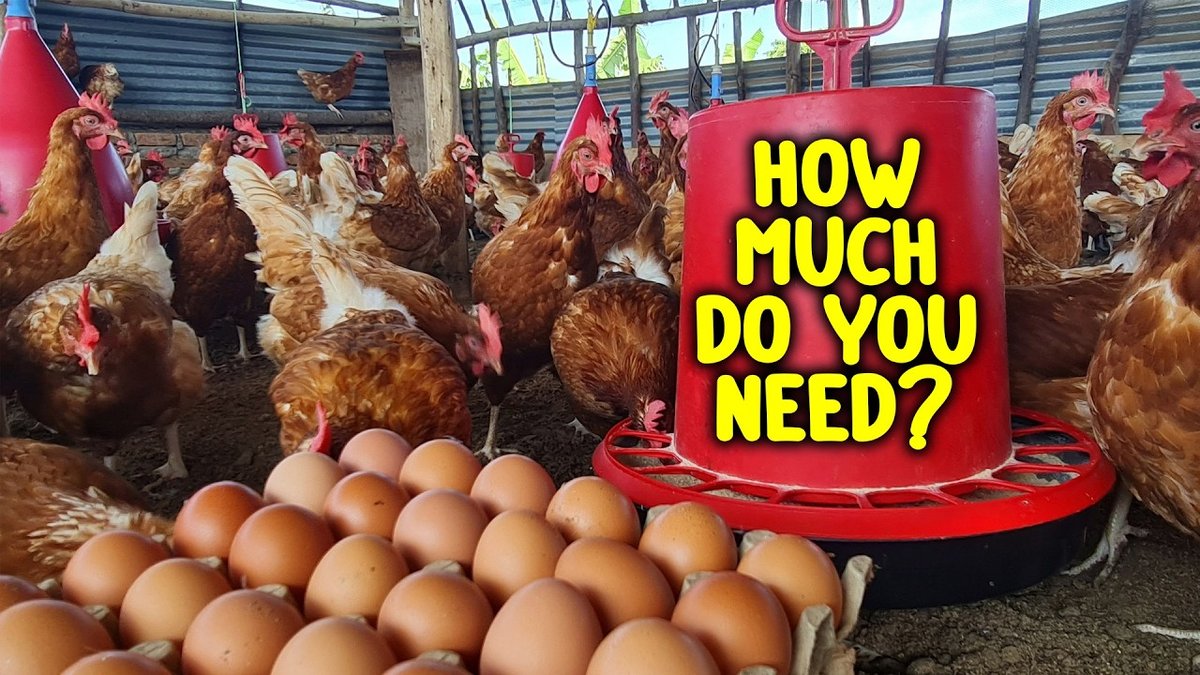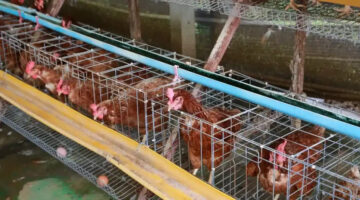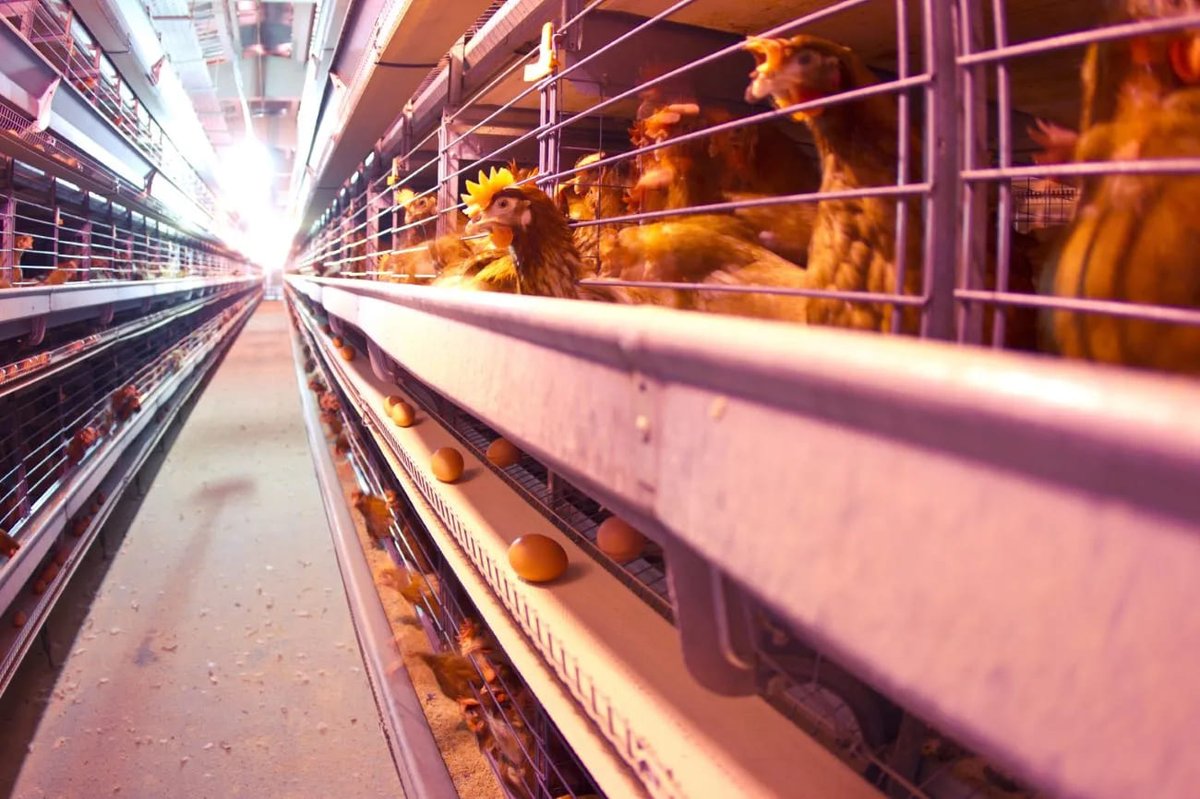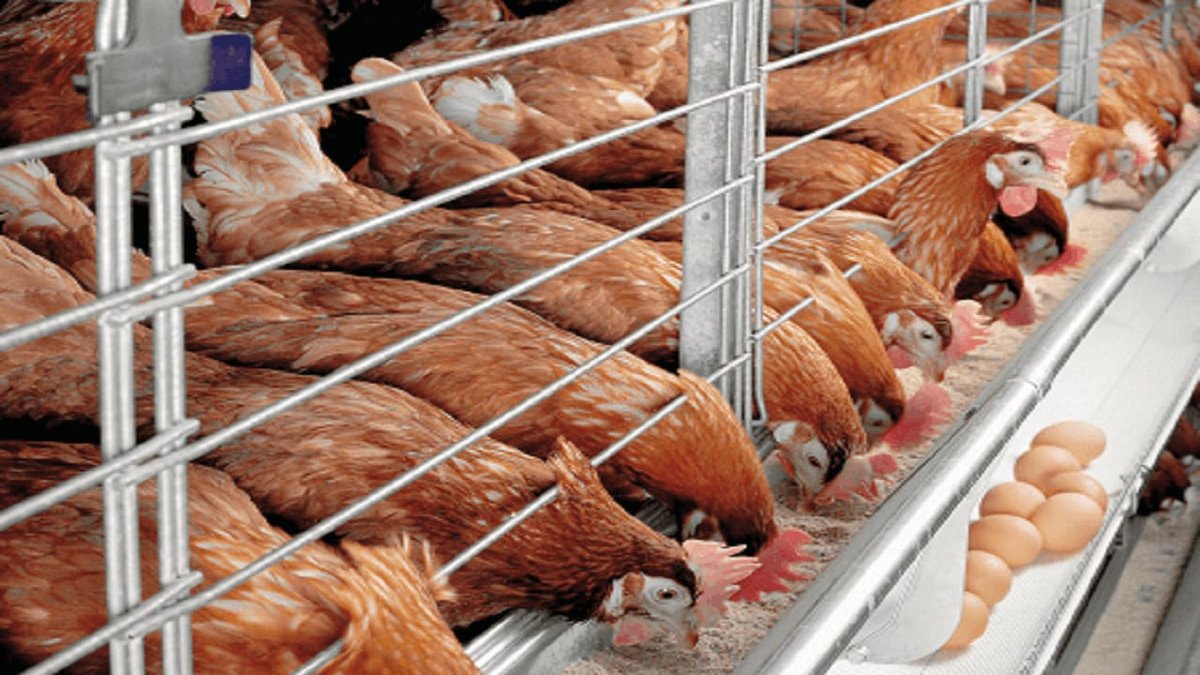Are you thinking about starting a poultry farm in Nigeria? Many people jump into broiler farming for quick profits. But if you are looking for a business that provides steady, long-term income, then layer farming is for you. Unlike broilers which are sold once, layers give you daily income from egg sales for almost two years. This guide is your complete blueprint on how to start a layer farm in Nigeria, showing you how to build a sustainable and profitable egg production business from the ground up.
In This Guide, You Will Learn:
- The full cost to start a 200-bird layer farm in 2025.
- A step-by-step plan for housing, feeding, and health management.
- How to calculate your monthly profit from egg sales.
- Expert secrets like lighting programs to maximize egg production.
Layer Farming vs. Broiler Farming: Which is Right for You?
Before you spend any money, it’s important to understand the difference between raising chickens for eggs (layers) and for meat (broilers). Think of it like a sprint versus a marathon. Broiler farming is a sprint for quick cash, while layer farming is a marathon for building long-term wealth. This choice will affect your budget, your time, and how you make money. Here’s a simple table to help you decide.
| Feature | Layer Farming (Egg Production) | Broiler Farming (Meat Production) |
|---|---|---|
| Business Model | Long-term, steady daily income | Short-term, lump-sum profit |
| Time to First Return | 18-22 weeks | 6-8 weeks |
| Initial Capital | Higher (long feeding period before sales) | Lower (quicker cycle) |
| Management Focus | Daily egg collection, shell quality, lighting | Rapid weight gain, feed conversion |
| Lifespan | 1.5 – 2 years of production | 6-8 weeks |
If you have less starting capital and need a fast return, broilers might be your entry point. But if you have the patience and capital to invest for a steady, reliable daily income, layer farming is the superior long-term business model.
Understanding this fundamental difference is the first step. Now, let’s break down the money you’ll need to make this long-term vision a reality.
Cost of Starting a Layer Farm in Nigeria (200-Bird Breakdown)
The biggest difference in the cost of starting a layer farm in Nigeria is budgeting for feed for 18-20 weeks before you see your first egg. This is the most important part to plan for, and where many new farmers make mistakes. For 200 birds, a safe budget is ₦1,200,000 to ₦1,620,000.
Here is a more detailed breakdown of the estimated costs for 2025:
| Item | Quantity | Estimated Cost (₦) | Notes |
|---|---|---|---|
| Point of Lay (POL) Chickens | 200 pullets @ 16 weeks | ₦600,000 – ₦800,000 | Buying POL birds is more expensive but saves you 16 weeks of waiting and risk. |
| Feed (Grower & Layer Mash) | For first few months | ₦300,000 – ₦400,000 | You must budget for feed until egg sales can cover costs. To get a more precise estimate, use our chicken feed calculator. |
| Housing (Battery Cages) | For 200 birds | ₦250,000 – ₦350,000 | Battery cages are often preferred for layers for hygiene and ease of collection. |
| Vaccines & Medication | Lump Sum | ₦50,000 – ₦70,000 | Covers the entire production cycle. |
| Total Estimated Cost | ₦1,200,000 – ₦1,620,000 |
Budgeting for Feed: The Make-or-Break Factor
This is where most of your initial money will go. A chicken will eat about 8-9 kg of feed (chick and grower mash) before it lays its first egg. For 200 birds, that’s almost 1,800 kg of feed. You must have the money to buy all this feed before you make a single naira from eggs. This planning is the key to success.
Housing Costs: Battery Cages Explained
For layers, battery cages are highly recommended. They keep the eggs clean, prevent the birds from eating the eggs, and make it easier to spot sick birds. You can buy locally fabricated cages, which are cheaper, or imported ones. A standard cage holds about 96 to 120 birds, so you would need two for a 200-bird farm.
Common Financial Mistakes to Avoid
- Underestimating Feed Costs: Don’t just budget for the first month. Have enough cash saved to cover feed for at least 5 months.
- No Emergency Fund: What if a disease strikes? Or feed prices suddenly increase? Keep at least 10% of your startup cost aside for emergencies.
- Buying Cheap, Unhealthy Birds: A cheap pullet from an unknown source might seem like a good deal, but it could carry diseases that will wipe out your flock. Always buy from reputable hatcheries like CHI Farms or Zartech.
With a solid financial plan in place, you are ready to move on to the practical steps of building your farm from the ground up.
Step-by-Step Guide to Setting Up Your Layer Farm
This is the core “how-to” section that will guide you through the process of turning your investment into a functional, egg-producing farm.
Step 1: Create Your Egg Farming Business Plan
A business plan is your roadmap. For layer farming, it’s very important. Your egg farming business plan Nigeria must show how you will pay for feed and other costs for the first 5-6 months before you start selling eggs. It should include:
- Business Registration: For a professional operation, consider registering your business with the Corporate Affairs Commission (CAC).
- Market Analysis: Who will you sell to? Local shops, hotels, schools, or markets in cities like Lagos, Ibadan, or Ogun State? Find out the current price of a crate of eggs in your area.
- Financial Plan: A detailed month-by-month budget for the first year. How much for feed, vaccines, and salaries?
- Operations Plan: What are the daily tasks (feeding, watering, egg collection) and weekly tasks (cleaning, health checks)?
Step 2: Choose Your Housing: Battery Cage vs. Deep Litter
When considering battery cage vs deep litter for layers, battery cages are often the better choice for egg production. Here’s why:
- Battery Cages: They make egg collection easy, keep the eggs clean, reduce feed wastage, and lower the risk of diseases spreading. The initial cost is higher, but it often pays off in the long run.
- Deep Litter System: This is a cheaper option where birds live on the floor on a bed of wood shavings. However, it comes with challenges like dirtier eggs, a higher risk of birds eating their own eggs, and more work to collect them. If you choose this system, you must have well-designed nesting boxes and ensure the litter is always kept dry.
Step 3: Sourcing Your Birds (Day-Old Chicks vs. Point of Lay)
You have two main choices for getting your birds:
- Day-Old Chicks: They are cheaper to buy, but you have to feed and raise them for 18-20 weeks before they lay. You also bear all the risk if any of them die or get sick during this period. This is a key consideration when deciding between chicks vs. adult hens.
- Point of Lay (POL) Pullets: These are young hens that are about 16-18 weeks old and are just about to start laying eggs. We recommend this for beginners. The point of lay chickens price in Nigeria is higher, but it saves you months of waiting and reduces your risk. You can get good POL birds from trusted suppliers like Amo Farm, Zartech, or Agrited.
How to Identify Healthy Point of Lay Pullets
When buying your birds, look for these signs:
- They should be active and alert.
- Their combs and wattles (the red flesh on their heads) should be bright red.
- They should be a uniform size and weight.
- They should not have any discharge from their eyes or nostrils.
Step 4: The Layer Management Program
Managing layers is all about details that lead to more eggs.
- Feeding for Egg Production: Your birds will go through different feeding stages. They start with Chick Starter mash, move to Grower Mash, and finally switch to Layer Mash once they start laying. Layer mash contains high levels of calcium and protein needed for making strong eggshells.
- The Importance of Calcium: A hen uses calcium to form eggshells. Without enough calcium, you’ll get soft-shelled or shell-less eggs. This is bad for business. Our ultimate guide to calcium for chickens explains this in more detail. Always provide a separate source of oyster shells or limestone grit so the birds can eat it as they need. The battery cage system helps prevent the bad habit of chickens eating their own eggs.
- Water: The Forgotten Nutrient: An egg is about 70% water. If your hens don’t get enough clean, cool water, they will stop laying. Water must be available 24/7. Nipple drinkers, often used in battery cages, are excellent for keeping water clean.
- The Lighting Program (Your Expert Secret): This is a secret many successful farmers use. Light stimulates a hen’s reproductive cycle. To ensure your hens lay eggs consistently, you must provide 14-16 hours of light per day. Use a low-wattage bulb to extend the daylight hours in the early morning and evening. This simple trick can greatly increase your egg count.
Step 5: Health, Biosecurity, and Common Layer Problems
Keep your farm clean to prevent diseases. Limit visitors who could bring germs to your farm. Watch out for layer-specific diseases like Egg Drop Syndrome, which causes a sudden drop in egg production. Also, manage issues like feather pecking by making sure the birds are not stressed and have enough space.
Your Biosecurity Checklist
- Place a footbath with disinfectant at the entrance of the poultry house.
- Do not allow unnecessary visitors.
- Have separate farm clothes and boots that don’t leave the farm.
- Control rats and wild birds, as they can carry diseases. Learning how to keep rats out of the chicken coop is a vital biosecurity skill.
- Never mix birds of different ages.
Sample Vaccination Schedule (Consult Your Vet)
This is a general guide. Always work with a local vet to create a schedule specific to your area.
- Day 7: LaSota (for Newcastle Disease) – via eye drop.
- Day 14: Gumboro (IBD) – in drinking water.
- Day 21: Gumboro (Booster) – in drinking water.
- Day 28: LaSota (Booster) – in drinking water.
- Week 6-8: Fowl Pox – via wing web.
- Week 9: Komorov (for Newcastle Disease) – via injection.
- Week 16-18: LaSota/IB/EDS combination vaccine before laying starts.
➡️ Free Download: Get our printable Layer Farm Vaccination Schedule PDF to hang in your coop.
Success Story: From 200 Birds to a Thriving Agribusiness
Adebayo began his layer farm in Ogun State with just 200 birds, armed with the knowledge that it was a long-term investment. He meticulously followed his business plan, budgeting for the initial 5 months of feed and implementing a strict biosecurity protocol. When a disease outbreak threatened nearby farms, his disciplined approach kept his flock healthy. Within two years, the consistent daily income from egg sales allowed him to pay off his initial capital and expand his farm to 1,000 birds. Today, Adebayo’s farm supplies eggs to local restaurants and supermarkets, proving that patience and a strong plan are the true secrets to success.
The Payoff: Profitability of Layer Farming in Nigeria
This is the part everyone is waiting for. Once your hens start laying (around 20-22 weeks), you can expect a steady daily income. Let’s calculate the monthly profit for a 200-bird farm at peak production (when about 85% of your hens are laying each day).
Monthly Profit Analysis (200 Birds)
| Item | Calculation | Amount (₦) |
|---|---|---|
| Total Monthly Revenue | 170 eggs/day x 30 days = 5100 eggs (170 crates) <br/> 170 crates x ₦5,500/crate | ₦935,000 |
| Total Monthly Expenses | ||
| Cost of Feed | 30 bags x ₦12,000 | (₦360,000) |
| Medication & Vitamins | Lump Sum | (₦20,000) |
| Miscellaneous (labor, transport) | Lump Sum | (₦50,000) |
| Total Monthly Expenses | (₦430,000) | |
| Net Monthly Profit | Revenue – Expenses | ₦505,000 |
The Break-Even Point (Crucial for Honesty): While the monthly profit looks attractive, remember your large initial investment. It will likely take 12 to 18 months of consistent production to pay back your startup costs and truly start making a profit. This is why layer farming is a long-term investment, and why having a solid financial plan is non-negotiable.
Factors That Affect Your Profitability
Your final profit depends on several things:
- Feed Price: This is your biggest cost and can change.
- Egg Price: The market price for a crate of eggs fluctuates.
- Mortality Rate: Keeping your birds alive and healthy is key.
- Laying Percentage: This is the number of eggs you get per day. The higher, the better.
Earning a profit is great, but building a long-lasting business requires thinking beyond the first production cycle. Let’s explore how you can manage your farm for sustainable success.
Managing Your Flock Long-Term
Layer farming is a long-term business. Here’s what to do after your first year to ensure continued success and growth.
What to Do with Spent Layers
After about 12-18 months of laying, a hen’s egg production will naturally drop. These hens are now called spent layers. At this point, you perform culling (removing them from the flock) and sell them for meat. They sell for a lower price than broilers, but this provides a final source of income from the birds and helps you raise money for your next flock.
Common Egg Quality Problems and Solutions
- Soft Shells: This means a lack of calcium. Provide oyster shells.
- No Yolk: This sometimes happens with young pullets that are just starting to lay. It usually normalizes over time.
- Blood Spots: Often caused by stress. Ensure the birds have a calm and quiet environment.
- Watery Whites: Can be caused by heat stress or diseases like Infectious Bronchitis. Ensure good ventilation.
Record Keeping for Success
You cannot manage what you do not measure. Keep daily records of:
- Total eggs collected.
- Amount of feed consumed.
- Any deaths (mortality).
- Vaccines or medications given.
This data will help you spot problems early and know if your farm is truly profitable.
Advanced Egg Marketing and Branding
Don’t just sell eggs; build a brand.
- Packaging: Instead of old newspaper crates, invest in clean paper crates. You can even create simple labels for your crates with your farm name, phone number, and a tagline like ‘Fresh from our farm in Ogun State.’ This builds a professional image and encourages repeat business.
- Target Bigger Buyers: Approach local hotels, bakeries, and schools. They need a consistent supply and may pay a premium for reliable quality.
- Highlight Your Quality: Is your yolk color a deep yellow? Do you have strong shells? Mention this to your customers. While the specific laws may differ from the US, the core principles of how to legally sell your chicken eggs—such as proper cleaning and packaging—are universal for building customer trust.
Seasonal Considerations
Your flock’s performance can change with the seasons. During the dry season, high temperatures can cause heat stress, leading to a drop in egg production and thinner shells. Ensure your birds have a constant supply of cool, clean water and good ventilation. In the rainy season, the risk of diseases from damp litter increases. Ensure your housing is well-ventilated and the bedding stays dry to keep your birds healthy.
Frequently Asked Questions (FAQ)
How many bags of feed does a layer eat before laying?
A layer will consume approximately 8-9 kg of feed (chick and grower mash) before she starts laying at around 18-20 weeks.
What is the best layer breed in Nigeria?
The ISA Brown is the most popular due to its high production rate (300+ eggs/year) and adaptability to our climate. The Bovan Nera is also excellent for its hardiness, especially in hotter areas.
How do I market my eggs?
Focus on consistency. Supply local shops, bakeries, restaurants, and schools in cities like Lagos, Ibadan, and Kano. Unlike broilers, your market for eggs is year-round, not just during festive seasons. Connect with the Poultry Association of Nigeria (PAN) for more market insights.
Can I mix different ages of birds together?
No, this is a very bad idea. Older birds can carry diseases that can easily kill younger birds. Always raise birds of the same age together in an “all-in, all-out” system.
Where can I get a loan for my poultry business?
The Nigerian government and other financial institutions offer agricultural loans. One of the most popular is the Agricultural Credit Guarantee Scheme Fund (ACGSF) administered by the Central Bank of Nigeria. Another great option is the Nigeria Incentive-Based Risk Sharing System for Agricultural Lending (NIRSAL), which provides guarantees for loans to agribusinesses. These programs can make it easier to get the capital you need to start your farm.
Conclusion
To summarize, starting a layer farm in Nigeria is a marathon, not a sprint. It requires higher initial capital and more patience than broiler farming. However, the reward is a stable, consistent daily income that can be the foundation of a powerful agribusiness. With the right planning, good management, and a focus on details like feeding and biosecurity, you can build a sustainable and profitable business that feeds the nation and secures your financial future through egg production. For a broader overview of the entire poultry industry, including broilers and noilers, see our complete guide to starting a profitable poultry business in Nigeria.

Oladepo Babatunde is the founder of ChickenStarter.com. He is a backyard chicken keeper and educator who specializes in helping beginners raise healthy flocks, particularly in warm climates. His expertise comes from years of hands-on experience building coops, treating common chicken ailments, and solving flock management issues. His own happy hens are a testament to his methods, laying 25-30 eggs weekly.



